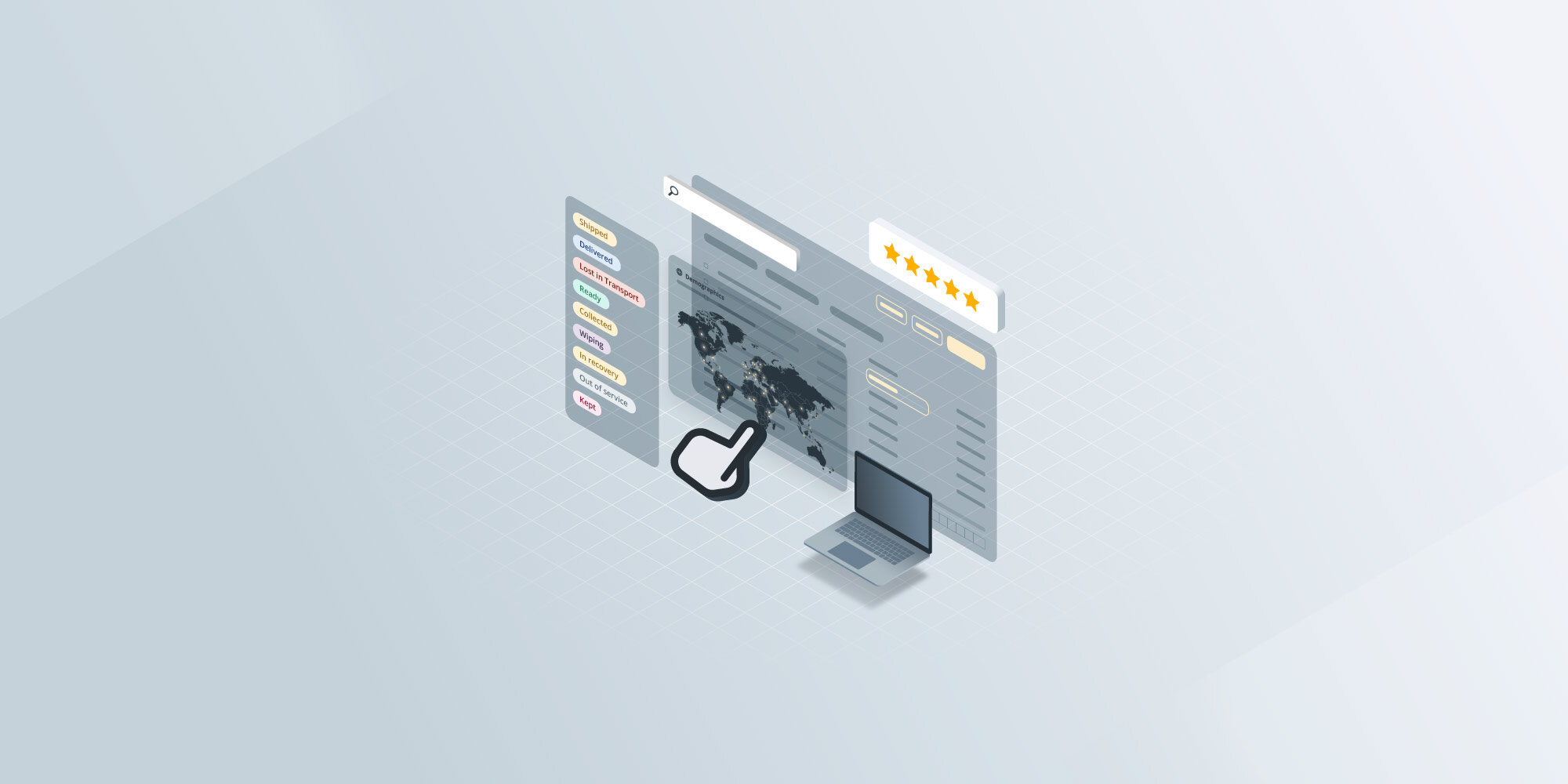Understanding IT infrastructure automation: Key strategies and tools
 GroWrk Team
GroWrk Team
IT infrastructure automation simplifies IT operations by using software and tools to handle tasks like server provisioning, network configuration, and application deployment. It lessens manual work, reduces errors, and boosts efficiency. In this article, discover IT infrastructure automation's strategies, tools, and benefits and how it can streamline your IT processes.
Key takeaways
-
IT infrastructure automation enhances operational efficiency by minimizing manual tasks, enabling faster deployments, and improving productivity through tools and processes.
-
Key automation tools, such as Ansible, Terraform, and Jenkins, facilitate configuration management, infrastructure provisioning, and continuous integration. Each addresses specific automation needs.
-
Implementing IT infrastructure automation requires strategic planning, tool selection, and organizational cultural shift to embrace continuous learning and collaboration.
What is IT infrastructure automation?

IT infrastructure automation is a collection of infrastructure processes and tools designed to reduce manual workload support across various environments. It involves using software, scripts, and algorithms to manage IT infrastructure tasks like server provisioning, network configuration, and application deployment. The primary goal is to minimize manual intervention and maximize productivity by automating infrastructure tasks through the infrastructure automation process and work.
A solid infrastructure automation framework eases the burden of managing regular updates, patches, and provisioning tasks. This approach improves efficiency and supports Infrastructure as Code (IaC) initiatives. Developers can manage infrastructure through code and enhance lifecycle management, minimizing human errors and ensuring process repeatability and accuracy.
Moreover, infrastructure automation unifies operations across diverse machines and environments. This capability is crucial for managing complex environments with existing staff, as it reduces technical debt and ensures reliability and repeatability in operations. Infrastructure automation significantly enhances IT operations by identifying and managing VM sprawl by automatically decommissioning unused workloads.
Key benefits of IT infrastructure automation

1. Enhance IT efficiency
One of the most significant benefits of infrastructure automation is enhancing IT efficiency. Automation tools enable hands-off operation across cloud and on-premises environments, drastically reducing the need for manual interventions. This shift allows teams to focus on core development activities instead of repetitive tasks, thereby accelerating innovation and growth.
2. Simplify IT system management
Infrastructure automation also simplifies IT system management by reducing the number of manual interactions required. This streamlining improves efficiency and productivity, as errors are minimized and processes become more consistent. Additionally, organizations can optimize operations, enhance collaboration between Dev and Ops teams, and streamline processes through automation.
3. Reduce costs
Another critical benefit is cost reduction. Automation tools help manage and eliminate runaway costs associated with IT budgets, making operations more cost-effective. Furthermore, automation contributes to security compliance by enforcing standard security policies, conducting routine security checks, and ensuring adherence to industry standards. This enhances the overall security posture and scalability of IT infrastructures.
Essential IT infrastructure automation tools

Infrastructure automation tools are indispensable to manage and streamline IT resources effectively. Key automation tools include:
-
Ansible - a widely-used open-source automation tool for configuration management, application deployment, and task automation. Known for its simplicity, it operates without agents or extra security infrastructure. Ansible uses YAML-based Playbooks for automation, making it accessible to beginners and experts. It effectively manages complex IT environments by automating repetitive tasks, ensuring consistency, and reducing human error. Its agentless architecture allows easy integration into existing systems without additional software, enhancing efficiency.
-
Puppet - An open-source automation tool used for configuration management and deployment. It allows IT teams to define the desired state of their infrastructure using a declarative language, ensuring consistency across systems. Puppet automates repetitive tasks, such as software installation and system updates, which helps reduce human error and improve efficiency. Its agent-based architecture enables it to manage various operating systems and applications.
-
Chef - Allows users to define infrastructure as code, enabling consistent and repeatable deployments across various environments. Chef uses a Ruby-based domain-specific language to create "recipes" that automate tasks like software installation and system configuration, helping to streamline IT operations and reduce manual errors. Its flexibility and scalability make it a popular choice for managing complex infrastructures.
-
Terraform - An open-source infrastructure as code (IaC) tool that allows users to define and provision data center infrastructure using a high-level configuration language. It enables the automation of infrastructure management across various cloud providers and on-premises environments, ensuring consistency and reducing manual errors. With Terraform, users can create, update, and version their infrastructure safely and efficiently, making it a popular choice for managing complex cloud environments.
-
AWS CloudFormation - A service that allows users to define and provision AWS infrastructure as code. It enables the creation of templates using JSON or YAML to automate the setup of resources like servers, databases, and networks. This approach ensures consistent and repeatable deployments, making it easier to manage complex cloud environments while reducing manual errors.
-
Kubernetes - An open-source container orchestration platform that automates containerized applications' deployment, scaling, and management. It helps manage clusters of hosts running containers, ensuring that applications run reliably and efficiently across different environments. Kubernetes provides features like load balancing, service discovery, and automated rollouts, making it a popular choice for organizations looking to streamline their application deployment processes.
- Open Tofu - an open-source project that provides a framework for managing and deploying infrastructure as code, similar to Terraform. It aims to simplify the infrastructure management process by allowing users to define their infrastructure declaratively. The project focuses on community collaboration and seeks to create a flexible and extensible tool for developers and DevOps teams.
Each tool has unique capabilities that cater to specific automation needs, from configuration management to infrastructure provisioning and continuous integration.
Tools like Terraform enable teams to manage cloud infrastructure with defined code, which enhances control and scalability. Open-source alternatives like OpenTofu provide similar functionality without licensing restrictions. Often, multiple tools are needed to meet specific requirements, allowing organizations to leverage the strengths of each tool for comprehensive automation.
Types of IT automation tools
Configuration management tools
Configuration management tools are essential for maintaining consistent configurations across IT environments. Tools like Puppet and Chef are renowned for their robust capabilities. Ansible, an agentless configuration management and orchestration tool, stands out for its simplicity and ease of use. Its configuration modules use a YAML-based language, making it easier to write and manage than other tools.
The concept of Infrastructure as Code (IaC) is a game-changer in configuration management. It allows for version-controlled, reproducible, and scalable deployments. This approach ensures that configurations are consistent and reliable across all environments, significantly reducing the risk of errors and enhancing overall system stability.
Infrastructure provisioning tools
Infrastructure provisioning tools are crucial for automating the deployment and management of IT resources. Terraform, a cloud-agnostic tool created by Hashicorp, supports private and public cloud infrastructures and maintains their state through state files. AWS CloudFormation, on the other hand, simplifies the creation and management of AWS resources, enabling global scaling and compliance with configuration regulations.
Businesses that manage cloud infrastructure rely on these tools to automate provisioning and configuration, ensuring reliable and cost-effective resource management. Tools like Terraform and Ansible can significantly enhance the efficiency and reliability of IT operations.
Continuous integration and deployment tools
Continuous Integration and Continuous Deployment (CI/CD) tools are vital for automating software deployment processes. Jenkins is widely used for building, deploying, and automating projects, effectively integrating with version control systems like GitHub. GitHub Actions further supports continuous integration pipelines by automating workflows related to repositories.
These tools streamline the deployment process, ensuring reliability and speed. For example, AWS CodePipeline provides a seamless framework for continuous delivery and deployment. DevOps teams can improve collaboration and efficiency by integrating CI/CD pipelines with infrastructure automation tools.
What key IT processes should you automate?

A comprehensive strategy is crucial for successful automation. Identifying opportunities within current IT workflows and developing a plan to automate these tasks can significantly improve operational efficiency for operations teams. Automation tools also play a vital role in orchestrating the application deployment process, ensuring that infrastructure and applications are deployed with all necessary dependencies using an automation tool.
Server provisioning
Server provisioning is one of the most impactful processes to automate. Automation can reduce the time needed to provision new resources from weeks to minutes. Infrastructure as Code (IaC) is particularly effective in this area, allowing teams to manage infrastructure through code and significantly speeding up deployments.
Automating server provisioning reduces errors and speeds up the deployment of new software updates to meet market demands. With its agentless architecture, tools like Ansible are exceptionally efficient in automating tasks across diverse systems. This leads to more efficient workflows and faster adoption of DevOps practices.
Configuration management
Consistency and standardization are critical benefits of automating configuration management. Automation ensures that configurations are applied uniformly across all environments, contributing to consistent infrastructure. Tools like Ansible and Puppet help organizations maintain consistent security standards and compliance across multi-cloud infrastructures.
Effective configuration management practices enhance the overall security and reliability of IT operations. By automating security policies and compliance checks, organizations can ensure that their infrastructure remains secure and compliant with industry standards.
Network management
Automation in network management saves significant man-hours on non-value-adding activities. It can efficiently manage key elements of a network, such as enablement, Internet connectivity, firewalls, routers, and switches. Automation also facilitates the inspection process for software integrity, ensuring that network devices function properly.
How to implement IT infrastructure automation
Creating a comprehensive automation plan involves detailing tasks, workflows, and timelines for effective implementation. Building automation scripts and workflows requires thorough testing in controlled environments before production deployment. Monitoring automated processes post-implementation is essential for ensuring they function correctly and meet performance expectations.
Planning and strategy
A well-defined automation plan is essential for successful implementation. This plan should outline specific tasks and workflows and emphasize the need for constant upgrades and improvements.
Continuously refining automation strategies ensures they remain effective and aligned with business goals.
Tool selection and integration
Evaluating existing tools against new automation solutions is crucial to align with business needs. Selecting the right tools involves considering the compatibility, scalability, and ease of integration. Selecting the right tools helps organizations create a robust automation framework that minimizes manual errors and enhances overall efficiency.
Training and cultural shift
Adopting automation necessitates a cultural shift toward continuous learning and adaptation among IT teams. Communication and collaboration are vital for a successful cultural change in infrastructure automation.
Building a culture that embraces automation helps improve operational efficiency and innovation within the organization.
Overcoming challenges in IT infrastructure automation

Successful implementation requires overcoming challenges in IT infrastructure automation. Common challenges include outdated infrastructure, budget constraints, and skill gaps. Addressing these challenges requires a strategic approach and the right infrastructure resources.
Outdated infrastructure
Legacy systems can significantly hinder automation efforts because they cannot integrate with newer software and operating systems. These outdated infrastructures require careful planning and gradual integration of new automation tools to ensure compatibility and functionality.
Addressing legacy systems lays the groundwork for a successful automation strategy.
Budget constraints
Effective cost management is crucial for successfully implementing automation strategies. One approach is to prioritize processes with the highest return on investment (ROI) and leverage open-source tools to reduce expenses. Allocating a specific budget for automation tools and ongoing maintenance costs ensures financial stability.
Evaluating the long-term ROI of automation projects helps organizations justify their initial investment and assess the operational efficiencies gained over time. Forecasting potential cost savings and efficiency improvements allows companies to make informed decisions about automation investments.
Skill gaps
Automation in IT environments requires less personnel and entails lower investments in technical training, leading to reduced costs in managing complex setups. However, a successful transition to automation requires teams to develop communication and collaboration skills.
To reduce vulnerabilities and effectively manage automated processes, it is essential to address skill gaps through training programs and foster a culture of continuous learning.
Best practices for successful IT infrastructure automation
Standardizing automation practices
Standardizing automation practices is crucial for organizations aiming to enhance operational efficiency and facilitate the seamless adaptation of new technologies. By creating uniform procedures and protocols, companies can ensure that their automation efforts are consistent and effective across all departments and functions. This standardization streamlines processes and reduces the likelihood of errors and inconsistencies arising from disparate practices.
Establishing governance
Establishing governance in automation involves developing comprehensive policies and frameworks to manage automated processes effectively. This includes setting clear guidelines for automation tools, defining roles and responsibilities, and ensuring that all automated activities align with the organization's strategic objectives. Additionally, governance requires robust compliance and security measures to protect sensitive data and maintain the integrity of automated systems. By doing so, organizations can significantly improve their operational efficiency, bolster their overall security posture, and minimize the risk of data breaches and other security incidents.
Real-world use cases of IT infrastructure automation
Implementing IT infrastructure automation has enabled organizations to streamline processes and optimize resource utilization.
E-commerce company
For instance, a leading e-commerce company faced significant challenges with its server provisioning process, which was traditionally time-consuming and labor-intensive. The company transformed this process by implementing IT infrastructure automation, reducing deployment times from several weeks to just a few minutes. This dramatic improvement enhanced operational efficiency and significantly boosted customer satisfaction by enabling faster and more reliable service delivery. The automation allowed the company to quickly scale its operations to meet increasing customer demands, ensuring its IT infrastructure could support rapid growth and maintain high service standards.
Financial institution
Similarly, a financial institution faced the complex and costly task of compliance monitoring, which required meticulous attention to detail and substantial resources. The institution streamlined these processes by adopting infrastructure automation, resulting in a remarkable 30% reduction in compliance-related costs. Automation tools enabled the institution to conduct routine checks and enforce compliance standards more efficiently, freeing up resources to focus on strategic initiatives.
Seamless IT automation with GroWrk for global teams
While tools like Ansible, Terraform, and Jenkins automate software provisioning and cloud management, GroWrk extends this automation to the management of physical IT assets. GroWrk automates the entire lifecycle of devices—from procurement and configuration to deployment and secure disposal—simplifying the process for global teams.
GroWrk’s capabilities align seamlessly with IT infrastructure automation in several ways:
-
Automated device provisioning: Like Terraform automates cloud provisioning, GroWrk enables zero-touch device deployment, ensuring devices arrive pre-configured and ready for use, regardless of location.
-
Asset lifecycle management: GroWrk automates device tracking, maintenance, and disposal, similar to how infrastructure tools manage virtual resources, reducing manual oversight and ensuring compliance.
-
Cost and compliance optimization: Just as infrastructure tools reduce costs and errors, GroWrk helps manage hardware expenses and ensures devices are secure and compliant throughout their lifecycle.
-
Data-driven insights: GroWrk offers visibility into asset usage, optimizes procurement, and reduces waste, complementing the insights provided by infrastructure automation tools.
Schedule a demo today and see how GroWrk can revolutionize your IT infrastructure management!
Frequently asked questions
What is IT infrastructure automation?
IT infrastructure automation leverages software and scripts to manage IT tasks, minimizing manual effort and enhancing overall efficiency. This leads to more streamlined operations and reduced errors in IT management.
What are the key benefits of infrastructure automation?
The key benefits of infrastructure automation are increased efficiency and productivity, cost reduction, error minimization, improved security compliance, and scalability. Embracing automation can significantly enhance your operational effectiveness.
Which tools are essential for infrastructure automation?
Essential tools for effective infrastructure automation include configuration management tools such as Puppet and Ansible, provisioning tools like Terraform and AWS CloudFormation, and CI/CD tools like Jenkins and GitHub Actions.
How can organizations overcome budget constraints when implementing automation?
Organizations can overcome budget constraints by prioritizing high-ROI processes, utilizing open-source tools, and carefully planning budgets for automation investments. This strategic approach helps ensure long-term value while effectively managing initial costs.
What are some real-world examples of successful infrastructure automation?
Infrastructure automation has proven successful in an e-commerce company that slashed server deployment times from weeks to minutes, and a financial institution that reduced compliance-related costs by 30%. These examples highlight the significant efficiency gains and cost savings achievable through automation.






